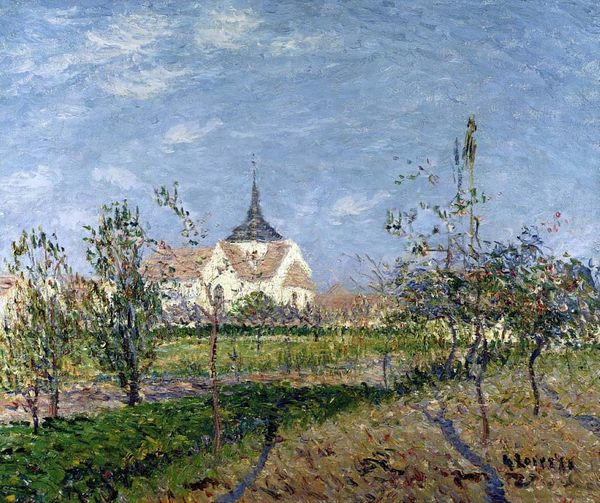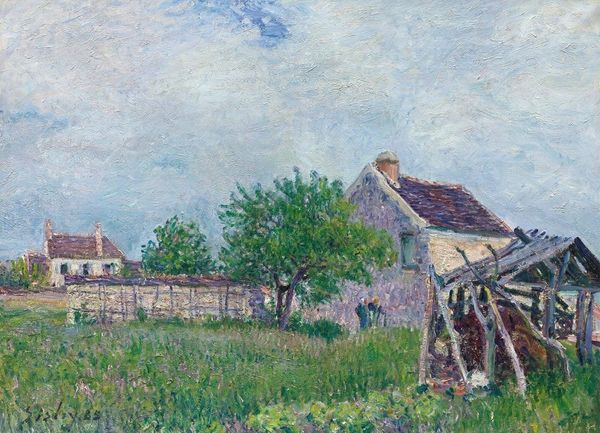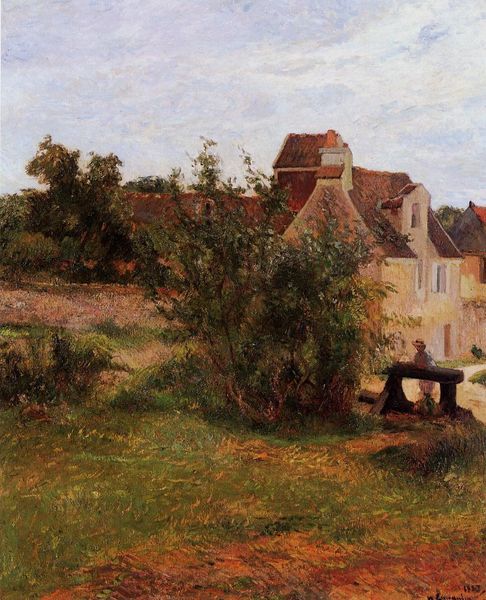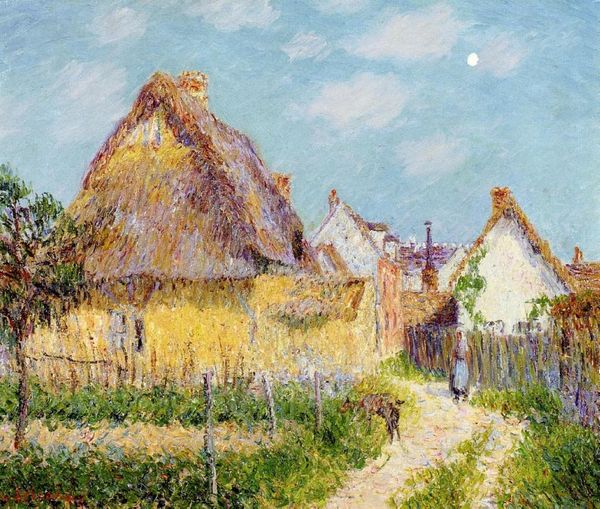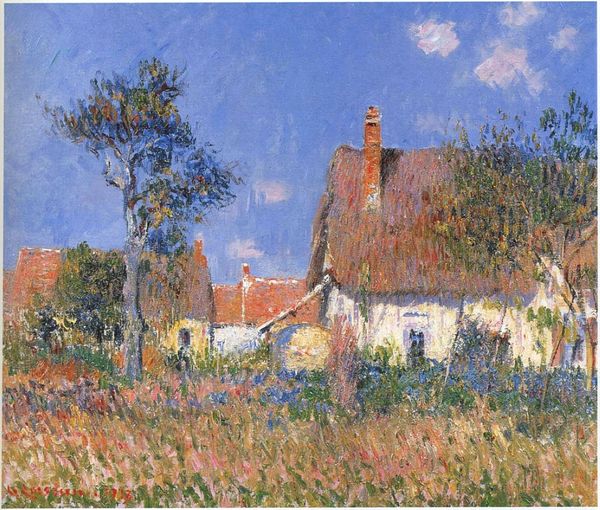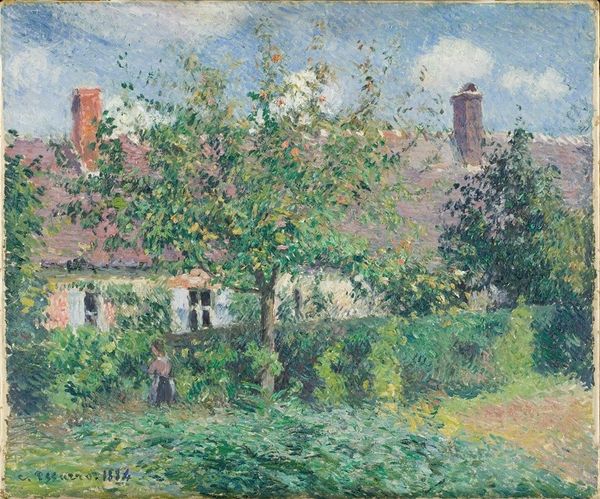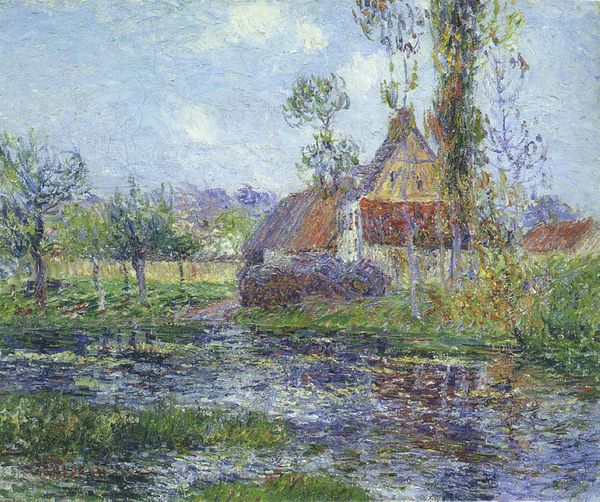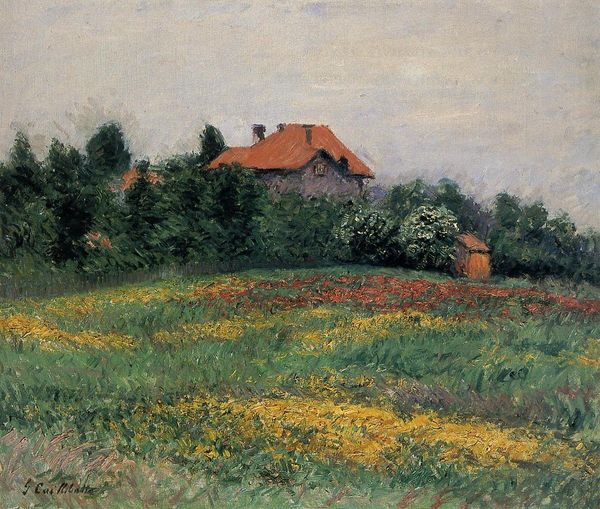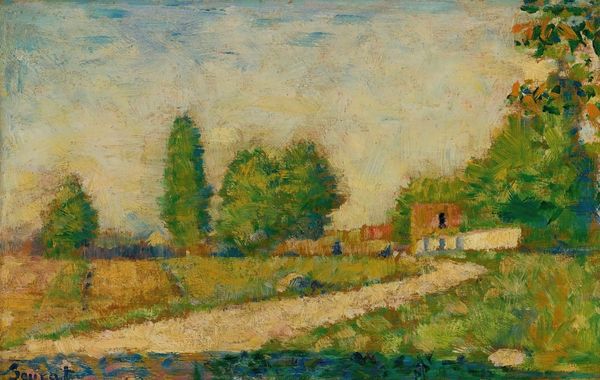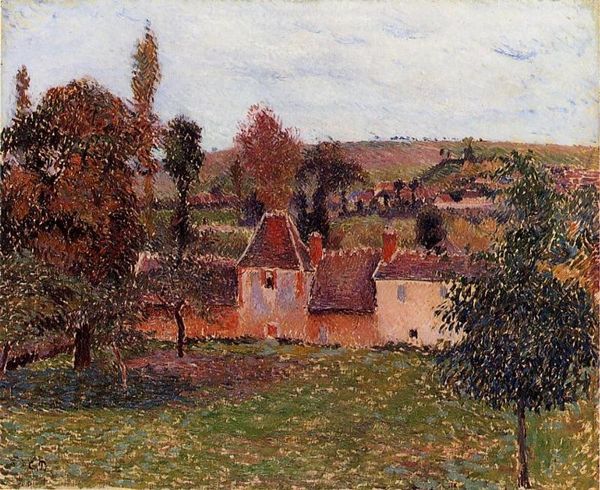
Copyright: Public domain
Camille Pissarro painted this study of a garden in Eragny with oil on canvas. Notice how the path draws the eye toward the gate, framed by greenery and the architecture of the home. The gate, a motif as old as civilization itself, speaks to both inclusion and exclusion. In ancient Greece, city gates marked not just physical boundaries, but the edges of the known world, places of transition and transformation. Similarly, Roman arches—often erected as city gates—symbolized imperial power and the passage of armies. Consider how this motif appears in Renaissance paintings, often representing thresholds to spiritual or emotional awakenings. Over time, the gate has come to symbolize transitions, choices, and the unknown, embodying our deepest fears and hopes about what lies beyond. It echoes through our collective memory, a symbol that engages us on a profound, subconscious level each time it resurfaces, evolving and accruing new layers of meaning with each iteration.
Comments
No comments
Be the first to comment and join the conversation on the ultimate creative platform.
